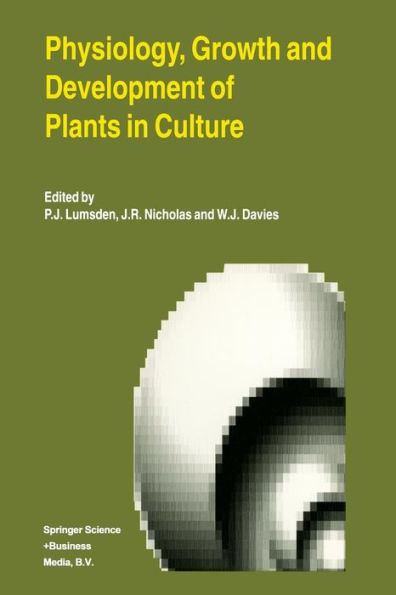Over recent years, progress in micropropagation has not been as rapid as many expected and, even now, relatively few crops are produced commercially. One reason for this is that the biology of material growing in vitro has been insufficiently understood for modifications to standard methods to be made based on sound physiological principles. However, during the past decade, tissue culture companies and others have invested considerable effort to reduce the empirical nature of the production process. The idea of the conference ‘Physiology, Growth and Development of Plants and Cells in Culture' (Lancaster, 1992) was to introduce specialists in different areas of plant physiology to micropropagators, with the express aims of disseminating as wide a range of information to as large a number of participants as possible, and beginning new discussions on the constraints and potentials affecting the development of in vitro plant production methods. This book is based on presentations from the conference and has been divided into two main sections, dealing with either aspects of the in vitro environment — light, nutrients, water, gas — or with applied aspects of the culture process — morphogenesis, acclimation, rejuvenation, contamination.
"1000990464"
Physiology, Growth and Development of Plants in Culture
Over recent years, progress in micropropagation has not been as rapid as many expected and, even now, relatively few crops are produced commercially. One reason for this is that the biology of material growing in vitro has been insufficiently understood for modifications to standard methods to be made based on sound physiological principles. However, during the past decade, tissue culture companies and others have invested considerable effort to reduce the empirical nature of the production process. The idea of the conference ‘Physiology, Growth and Development of Plants and Cells in Culture' (Lancaster, 1992) was to introduce specialists in different areas of plant physiology to micropropagators, with the express aims of disseminating as wide a range of information to as large a number of participants as possible, and beginning new discussions on the constraints and potentials affecting the development of in vitro plant production methods. This book is based on presentations from the conference and has been divided into two main sections, dealing with either aspects of the in vitro environment — light, nutrients, water, gas — or with applied aspects of the culture process — morphogenesis, acclimation, rejuvenation, contamination.
54.99
In Stock
5
1

Physiology, Growth and Development of Plants in Culture
427
Physiology, Growth and Development of Plants in Culture
427Paperback(Softcover reprint of the original 1st ed. 1994)
$54.99
54.99
In Stock

Product Details
| ISBN-13: | 9789401043397 |
|---|---|
| Publisher: | Springer Netherlands |
| Publication date: | 11/22/2012 |
| Edition description: | Softcover reprint of the original 1st ed. 1994 |
| Pages: | 427 |
| Product dimensions: | 6.30(w) x 9.45(h) x 0.04(d) |
From the B&N Reads Blog
